Surviving Tornadoes: Preparation, Detection, and Recovery
Tornadoes are one of the most destructive and powerful natural phenomena that occur on Earth. They are characterized by a rotating column of air that extends from the base of a thunderstorm to the ground. Tornadoes can cause significant damage to property, infrastructure, and human life, and they are a serious threat to many parts of the world, particularly in the United States. Surviving Tornadoes is not easy; it requires Knowledge Preparation, Detection, and Recovery for the people and businesses involved.
Formation and Characteristics of Tornadoes
Tornadoes form when warm, moist air rises rapidly and meets with cooler, drier air. This can happen in many different situations, but it often occurs during thunderstorms. As the warm air rises, it creates an updraft, which can begin to rotate due to the wind shear between the warm and cool air masses. This rotation can intensify, forming a mesocyclone, which is a rotating updraft that is several miles wide.
As the mesocyclone continues to intensify, it can create a funnel cloud, which is a rotating column of air that extends from the base of the cloud. If the funnel cloud reaches the ground, it becomes a tornado. Tornadoes can vary in size from just a few feet across to more than a mile wide, and they can travel at speeds of up to 70 miles per hour.
The Fujita Scale is used to categorize tornadoes based on their intensity and the damage they cause. The scale ranges from F0 (the weakest) to F5 (the strongest), with F5 tornadoes capable of destroying entire neighborhoods and causing catastrophic damage.

Tornadoes and Climate Change
Climate change is expected to have an impact on the frequency and intensity of tornadoes in the future. While the exact relationship between climate change and tornadoes is still being studied, some researchers believe that warmer temperatures and increased atmospheric moisture could lead to more frequent and intense thunderstorms, which could in turn lead to more tornadoes.
Preparing for Tornadoes
Tornadoes can strike quickly and without warning, so it is important to be prepared in case one does occur. One of the best ways to prepare for a tornado is to have a plan in place for where to take shelter. This could be a basement, storm shelter, or an interior room on the lowest level of a building. It is also important to have a disaster kit with supplies like food, water, and a first aid kit.
In addition to being prepared, it is important to stay informed about the weather. Pay attention to weather forecasts and be aware of the signs of an impending tornado, such as darkening skies, large hail, and a loud roar that sounds like a freight train.
Which states are common for tornadoes?

Tornadoes can occur in any state in the United States, but some states are more prone to tornadoes than others due to their geography, climate, and location in the “Tornado Alley” region of the country. There are even Australia tornadoes but the USA is more famous for tornadoes. Here are some of the states that are most commonly affected by tornadoes:
- Texas: Texas experiences the most tornadoes of any state in the U.S., with an average of 155 tornadoes per year.
- Oklahoma: Oklahoma is also located in the heart of Tornado Alley and experiences an average of 62 tornadoes per year.
- Kansas: Kansas is another state located in Tornado Alley, and experiences an average of 62 tornadoes per year.
- Florida: Florida experiences a high number of tornadoes due to its warm, humid climate, with an average of 66 tornadoes per year.
- Nebraska: Nebraska experiences an average of 55 tornadoes per year, with the majority occurring between May and June.
- Missouri: Missouri is located on the eastern edge of Tornado Alley and experiences an average of 48 tornadoes per year.
- Iowa: Iowa experiences an average of 47 tornadoes per year, with the majority occurring between May and August.
- Illinois: Illinois experiences an average of 46 tornadoes per year, with the majority occurring between April and June.
- Alabama: Alabama experiences a high number of tornadoes due to its warm, humid climate, with an average of 45 tornadoes per year.
- Mississippi: Mississippi is located in the southern part of Tornado Alley and experiences an average of 40 tornadoes per year.
It is important to remember that tornadoes can occur in any state, and it is important to be prepared and informed about tornado safety regardless of where you live.
Are tornadoes increasing in frequency nowadays?
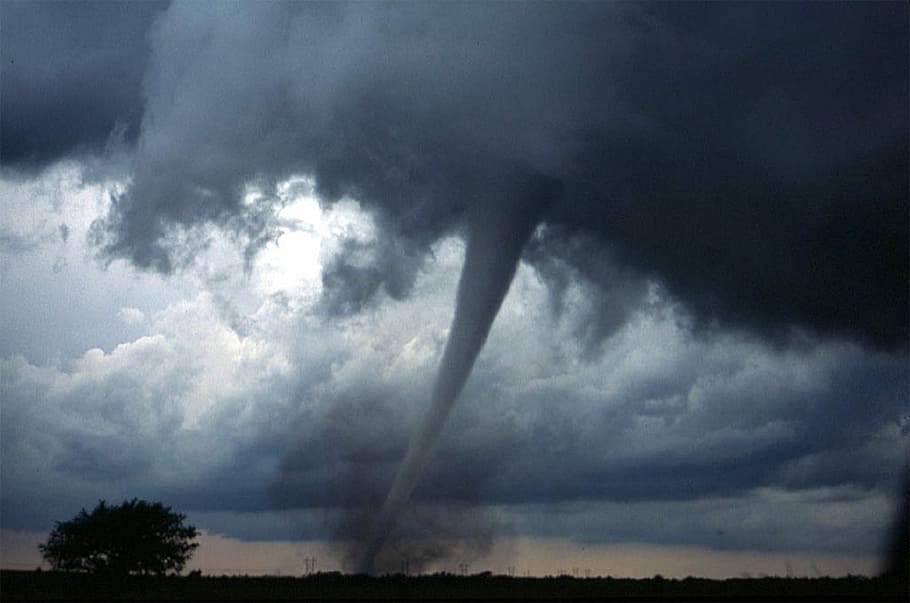
There is some evidence to suggest that tornado frequency may be increasing in certain regions of the United States, but this topic is still the subject of ongoing research and debate among meteorologists and climate scientists.
It is important to note that the number of tornadoes recorded each year can be influenced by a number of factors, including changes in detection technology, changes in population density and urbanization, and changes in reporting practices. Additionally, some regions of the country may experience more variability in tornado frequency from year to year than others.
Despite these complexities, some studies have suggested that tornado activity may be increasing in certain parts of the country, particularly in the southeastern United States. Other studies have found no clear trend in overall tornado frequency, but have noted changes in the timing and location of tornado activity.
Overall, it is still too early to definitively conclude whether tornado frequency is increasing or not. However, it is clear that tornadoes remain a serious and potentially deadly weather hazard, and it is important for people in at-risk regions to remain vigilant and prepared for tornadoes regardless of any potential trends in frequency.
How is the government handling tornadoes?
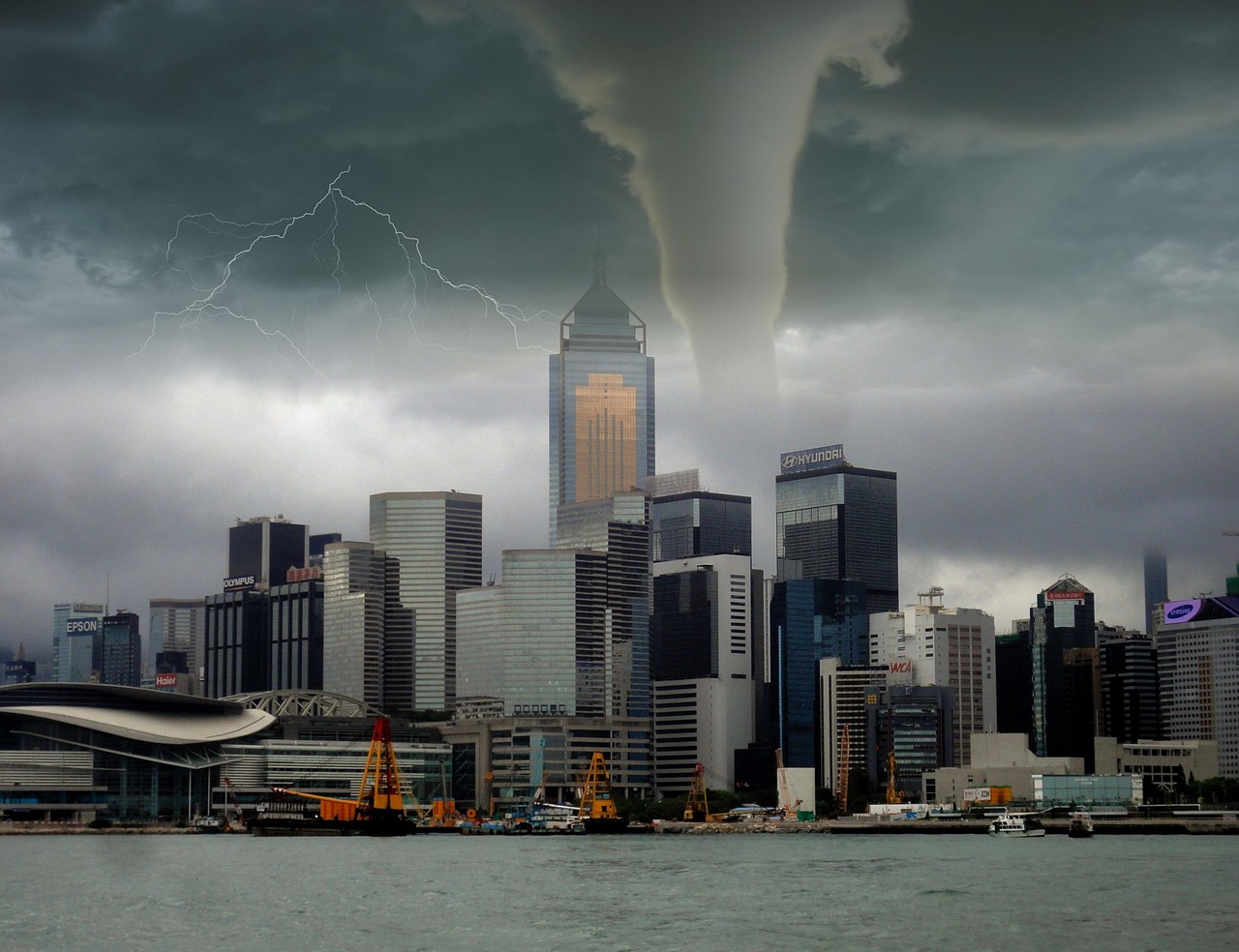
The U.S. government has taken several steps to help mitigate the impacts of tornadoes and improve public safety. Here are some ways the government is handling tornadoes:
- National Weather Service (NWS): The National Weather Service is responsible for issuing weather forecasts, warnings, and alerts to the public, including tornado warnings. The NWS also conducts research and provides training to help improve tornado forecasting and warning systems.
- Federal Emergency Management Agency (FEMA): FEMA is responsible for coordinating the federal government’s response to disasters, including tornadoes. FEMA provides funding and resources to help affected communities recover from tornadoes and other disasters.
- Tornado research: The government supports research into tornadoes, including efforts to improve tornado forecasting and warning systems. The National Oceanic and Atmospheric Administration (NOAA) operates a fleet of research aircraft to study severe storms, including tornadoes.
- Emergency management plans: The government works with state and local emergency management agencies to develop and implement emergency management plans that include tornado preparedness and response.
- Building codes and standards: The government sets building codes and standards to help reduce the damage and destruction caused by tornadoes. These codes and standards apply to new construction and renovations, and cover topics such as roof construction, wind resistance, and safe rooms.
- Disaster relief: The government provides disaster relief funding to communities affected by tornadoes and other disasters. This funding can help cover the costs of emergency response, debris removal, and rebuilding.
Overall, the government’s response to tornadoes involves a coordinated effort between multiple agencies and levels of government, as well as collaboration with private sector partners and the public. The goal of these efforts is to improve tornado preparedness, reduce the impact of tornadoes on communities, and save lives.
How are businesses affected by tornadoes and how does insurance help?
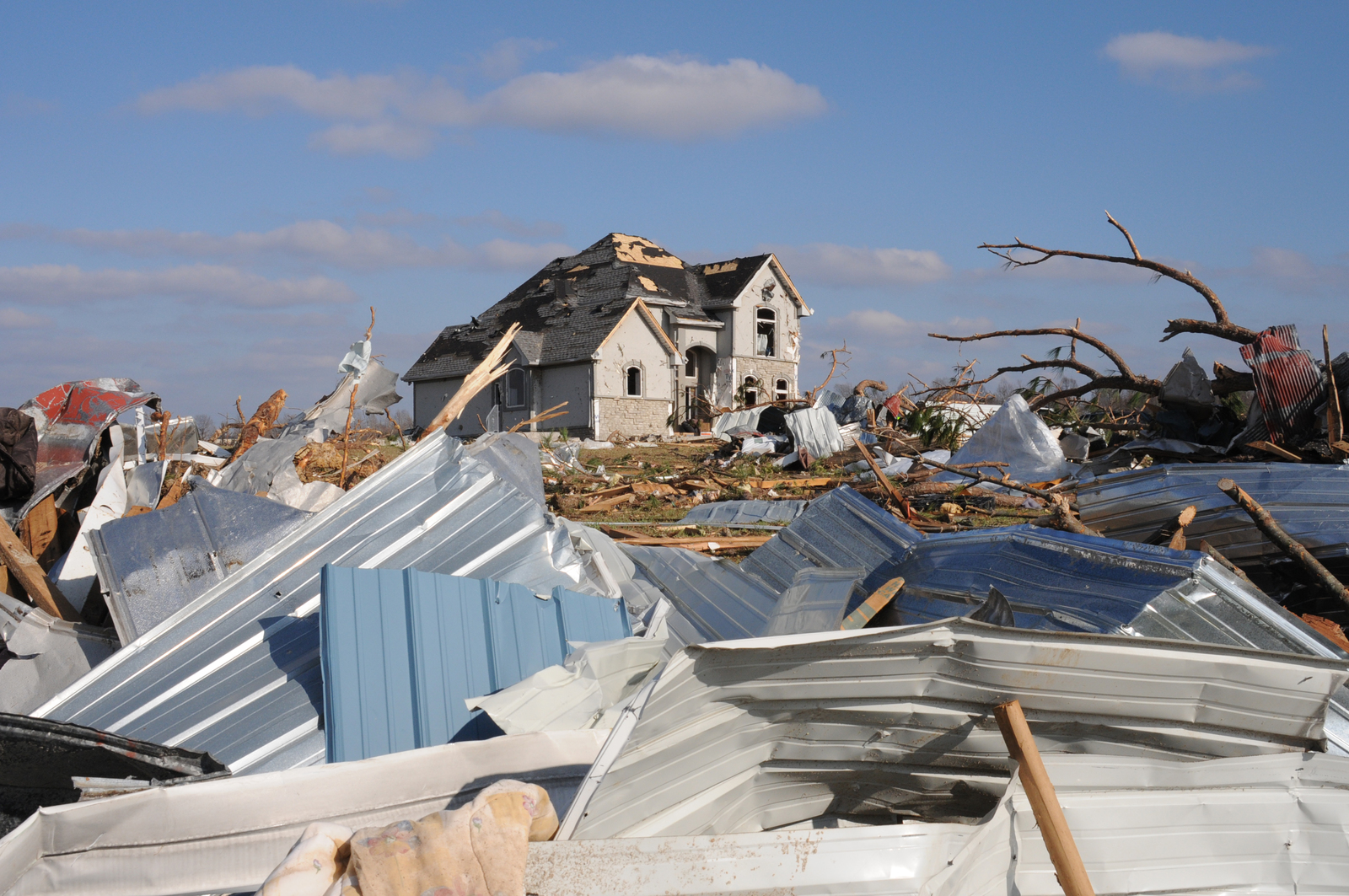
Tornadoes can have a significant impact on businesses, including damage to buildings and equipment, interruption of operations, and loss of revenue. Here are some ways that tornadoes can affect businesses and how insurance can help:
- Property damage: Tornadoes can cause extensive damage to buildings, including roofs, walls, windows, and doors. This can lead to expensive repairs or even total loss of the building. Commercial property insurance can help cover the costs of repairing or rebuilding damaged property.
- Business interruption: Tornadoes can also cause businesses to temporarily shut down or relocate, leading to lost revenue and increased expenses. Business interruption insurance can help cover the costs of lost income and extra expenses, such as rent for a temporary location or payroll for employees.
- Supply chain disruption: Tornadoes can disrupt the supply chain of businesses, causing delays in receiving supplies or shipping products to customers. This can result in lost sales and reduced profits. Supply chain insurance can help cover the costs of these disruptions.
- Liability claims: Tornadoes can also result in liability claims against businesses, such as injuries to customers or employees caused by the tornado. General liability insurance can help cover the costs of these claims.
It is important for businesses to review their insurance coverage regularly and ensure they have adequate coverage for potential tornado damage and losses. Some insurance policies may exclude coverage for certain types of damage, such as flood damage, so it is important to carefully review policies and consider adding additional coverage if needed.
In addition to insurance, businesses can take steps to prepare for tornadoes and reduce the risk of damage and losses, such as developing an emergency response plan, securing buildings and equipment, and backing up important data and documents.
How to early detect a tornado?

Early detection of tornadoes is critical in order to provide sufficient time for people to take shelter and protect themselves from the potential dangers of the tornado. Here are some ways to detect a tornado early:
Pay attention to weather forecasts: Weather forecasting agencies like the National Weather Service (NWS) provide warnings and alerts for severe weather conditions, including tornadoes. Stay tuned to local radio or television stations, or use weather apps on your phone to stay informed about potential tornadoes in your area.
Look for signs of an approaching tornado: Keep an eye out for changes in the weather, such as darkening skies, thunderstorms, and large hailstones. You may also hear a loud roar that sounds like a freight train, or see a rotating cloud formation known as a wall cloud or funnel cloud.
Use weather radar: Doppler radar is used by the NWS to detect rotation in storm systems that could potentially produce tornadoes. You can check local weather radar to see if there is any rotation in nearby storm systems. So you can know when a tornado near you is approaching.
Stay aware of emergency sirens: Many communities have emergency sirens that are sounded when a tornado is approaching. Familiarize yourself with the sound of the sirens in your area, and know what to do when you hear them.
It is important to take any tornado warning seriously and take immediate action to protect yourself and your loved ones. Having a plan in place ahead of time, such as identifying a safe place to take shelter and having an emergency kit ready, can help ensure your safety in the event of a tornado.
What tornado monitoring apps are out there?
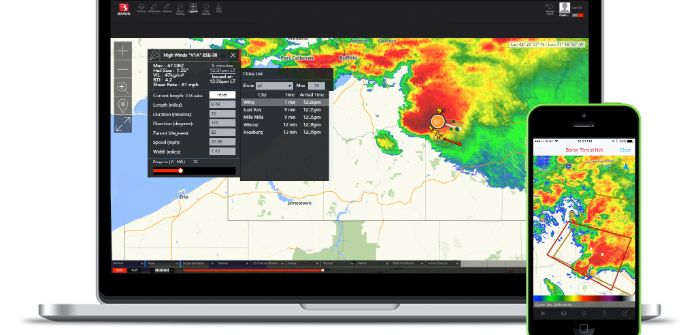
There are several tornado monitoring apps available for both Android and iOS devices that can help you stay informed about severe weather conditions, including tornadoes. Here are some popular tornado monitoring apps to alert for tornadoes across the US today:
- The Red Cross Tornado app: This free app, available for both Android and iOS, provides real-time tornado warnings and alerts, as well as information on how to prepare for and respond to tornadoes. It also includes a toolkit with a flashlight, strobe light, and audible alarm.
- Storm Radar: This app, available for both Android and iOS, provides real-time radar data, weather alerts, and detailed storm information. It includes a feature called “Future Radar” that allows you to see where storms and tornadoes are likely to be in the next hour.
- MyRadar: This app, available for both Android and iOS, provides real-time weather radar data, including tornado warnings and alerts. It also includes a feature called “Hurricane Tracker” that allows you to track hurricanes and tropical storms.
- WeatherBug: This app, available for both Android and iOS, provides real-time weather data, including tornado warnings and alerts. It also includes a feature called “Lightning Alerts” that notifies you when lightning is detected in your area.
- TornadoSpy+: This app, available for iOS, provides real-time tornado tracking and warnings, as well as user-submitted tornado reports and photos. It also includes a feature called “Tornado History” that allows you to view historical tornado tracks.
It is important to remember that no app can guarantee your safety during a tornado. Always follow official weather warnings and instructions from local authorities, and seek shelter immediately in a safe location.
How to survive through a tornado?
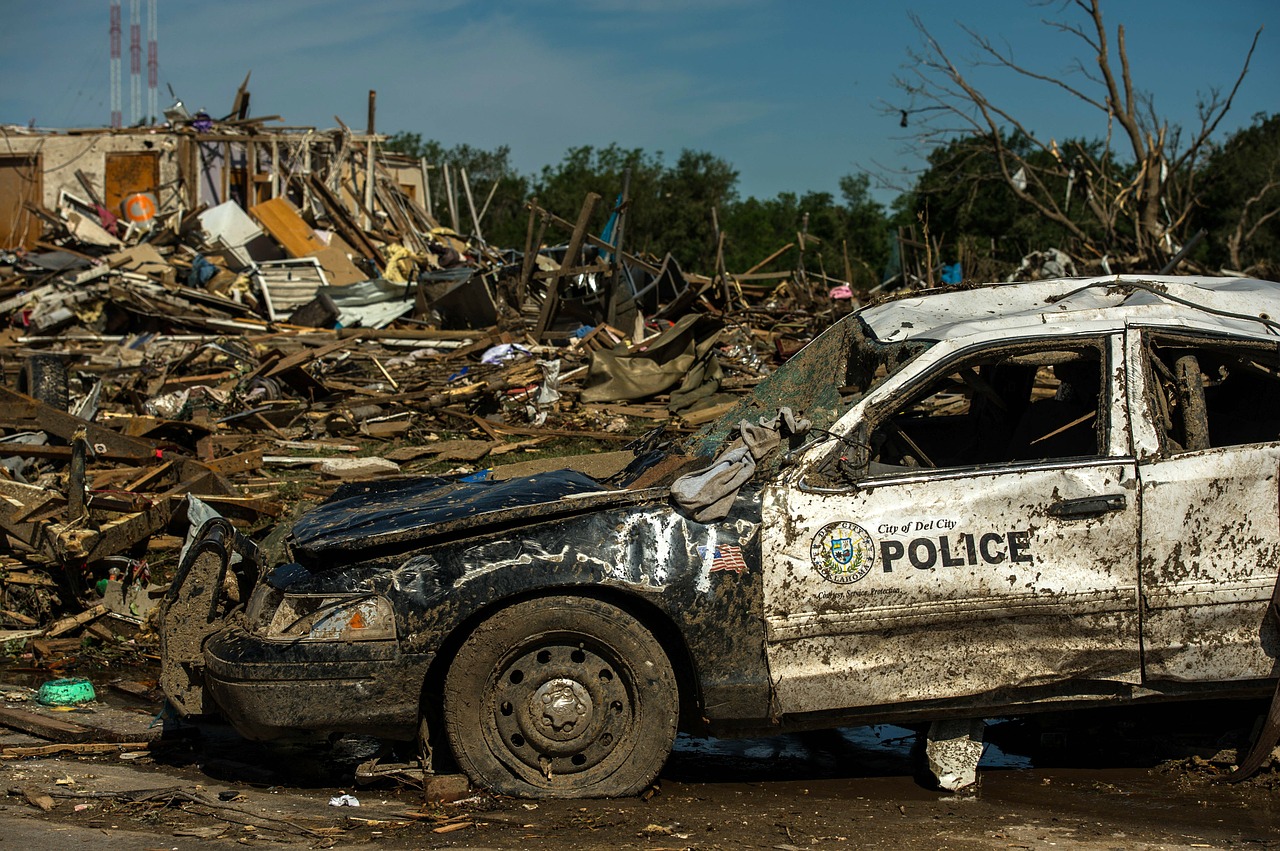
Tornadoes are a serious weather event that can cause significant damage and danger to people and property. Here are some tips on how to survive a tornado:
- Identify a safe place to take shelter: Seek shelter in a sturdy building, preferably in a basement or storm cellar. If that is not possible, find an interior room on the lowest level of the building, such as a bathroom or closet.
- Cover yourself: Protect yourself from flying debris by covering yourself with blankets, pillows, or a mattress.
- Stay away from windows: Stay away from windows and exterior walls, as they are the most vulnerable to damage and debris.
- Wear protective gear: If you have access to a helmet or sturdy shoes, wear them to protect your head and feet from injury.
- Listen for updates: Stay tuned to local radio or television stations for updates and instructions from emergency management officials.
- Do not use elevators: Avoid using elevators during a tornado, as they could fail and trap you inside.
- Stay low: If you are caught outside, lie flat in a low-lying area and cover your head with your hands.
- After the tornado: Stay inside until the tornado has passed and it is safe to go outside. Watch for downed power lines and other hazards.
It is important to have an emergency plan in place ahead of time and to practice tornado drills with your family or coworkers. Being prepared and knowing what to do can help you and your loved ones stay safe during a tornado.
What is a tornado survival kit?
A tornado survival kit is a collection of essential items that can help you and your family stay safe and comfortable during and after a tornado. Here are some items you may want to include in your tornado survival kit:
- Emergency food and water: Store at least 3 days’ worth of non-perishable food and bottled water for each person in your household. Be sure to include a manual can opener if you have canned foods.
- First aid kit: Keep a basic first aid kit on hand with bandages, antiseptic, and any medications you may need.
- Personal hygiene items: Pack items such as toilet paper, wet wipes, soap, and hand sanitizer.
- Weather radio: A battery-powered or hand-crank weather radio can help you stay informed about tornado warnings and updates which is essential for surviving tornadoes.
- Flashlight and extra batteries: Make sure you have a working flashlight and extra batteries in case of power outages.
- Extra clothing and blankets: Pack warm clothing, blankets, and extra socks and shoes in case you need to leave your home or shelter.
- Cash: Keep some cash on hand in case ATMs and credit card machines are not working.
- Important documents: Keep copies of important documents such as birth certificates, insurance policies, and identification in a waterproof container.
- Tools and supplies: Pack a multi-tool, duct tape, and a whistle in case you need to signal for help or make temporary repairs.
- Entertainment items: Pack items such as books, games, and puzzles to keep yourself and your family occupied during long periods of downtime.
It is important to regularly check and update your tornado survival kit to ensure that all items are in good condition and up-to-date. Keep your surviving tornadoes kit in a designated location that is easily accessible in case of an emergency.
Conclusion
Tornadoes are a powerful and destructive natural phenomenon that can cause significant damage to property and infrastructure, as well as pose a threat to human life. While the exact relationship between tornadoes today and climate change is still being studied, it is important to be prepared in case a tornado does occur. By having a plan in place and staying informed about the weather, we can help mitigate the impact of tornadoes and protect ourselves and our communities.
The post Surviving Tornadoes: Preparation, Detection, and Recovery appeared first on Sunshine Slate.
source https://www.sunshineslate.com/business/environment/surviving-tornadoes-preparation-detection-and-recovery/

Comments
Post a Comment